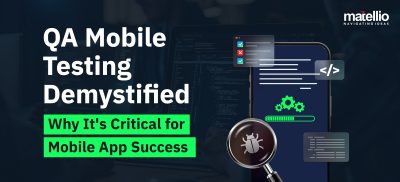
Finally, it happened! The biggest marketplace for NFT – OpenSea, just crossed the $10 Billion in its all-time sale record last weekend, proving yet another time that the world is ready for web 3.0, and it’s no more a bubble about to burst open.
If you’re new to NFT and this is the first time you’ve heard of OpenSea, don’t worry, for it took shockingly little time for this marketplace to skyrocket through charts, yet it still is in a neophyte stage. In any case, we’re sure that by the end of this post, you will not only have complete confidence in your know-how on NFT and its marketplaces, but you’ll be well-equipped with all the knowledge to build one for yourself. So, without further ado, let’s get the dice rolling.
What is an NFT?
NFT or Non-Fungible token, in general terms, is the ownership token of a digital asset stored in an immutable record on a blockchain.
To break the definition down, a digital asset can be anything from a digital photograph of an old mansion to a rare audio clip of baby whale whisper, the age-old internet meme of Nyan Cat, the screenshot of Jack Dorsey’s first-ever tweet, or a random collection of vector art.
Since all these arts could not have any specific value, their price is determined by the demand and supply paradigm. This is why most of the NFTs are auctioned rather than sold at a fixed price. And this is also why they are called to be non-fungible.
So contrary to NFT, a fungible item is one that can be broken down into smaller units and can still retain some of the value. Fungible items, like currency, can also be exchanged for another currency of the same value. However, since NFTs are unique artforms, unique being the keyword here, they cannot be exchanged for something of the same value.
Now, moving on to the next part of the definition, NFTs are ownership tokens, and precisely so. When someone buys or sells an NFT, they do not give away a hard copy of the art. Rather the seller transfers the ownership of the digital art to the buyer. This means any number of people can still download the art and use it for their respective purposes, but the owner of the art will remain with the buyer until they sell it to someone else.
In this way, NFTs are quite similar to the artwork in a museum. Many people can come and appreciate it, they may even hang a copy of it in their homes, yet the owner of the original artwork remains with the museum.
You may now ask that when a museum has the ownership of certain artwork, they have a certificate as well as the art itself with themselves to prove their ownership; how do NFTs find a workaround that. And this is where the last part of the definition enters the image. All NFT transactions are recorded in a blockchain. Since blockchains are immutable, any particular NFT entity’s record will always show its latest owner, with documented records of all the owners before that.
NFT Marketplace: How it works?
NFT marketplace, in simple terms, is a user-friendly marketplace for NFTs where investors and artists can come to buy and sell them. Although the logic here is pretty simple, it is to be noted that integrating all this on a heavily-secured blockchain in the back-end is not as straightforward. To simplify things, let’s briefly understand how an NFT marketplace functions.

Salient Interfaces to Include to Your NFT Marketplace
It’s clear that completing an NFT transaction requires an automated process that doesn’t bother the investors and artists when making a transaction on the platform. Both artists and investors can easily sway away from your marketplace if it is not user-friendly enough or doesn’t have any of the necessary features for all the parties concerned-
Storefront:
NFT marketplace, first and foremost, is a place to buy NFTs for the larger of your target audience. Therefore, ensure that the starting window provides the user a facile interface from where they can buy an NFT. This interface would be much similar to a mainstream eCommerce store, where instead of tangible products, you will have NFTs enlisted.

Image Source
Here, you can apply all the best practices of an eCommerce store to make your NFT marketplace more personalized, engaging, and encouraging sales.
To simplify the buying process, you can add relevant filters, add a search feature, allow price preferences, mention the types of buying options, etc., for the buyers. And since the entire market is pretty new for all, you can showcase the bestselling collections on your marketplace as well to boost the new buyers’ confidence in making a purchase.
Sellers’ Interface:
Most marketplaces offer options to both buy and sell NFTs. And the sellers’ front is usually much simpler and more limited than the storefront. Here you will allow the creators/artists to upload their work and provide necessary details around it. This will include the name of the art, its description, the collection’s details, and other textual properties that make their art unique and increase its selling point.

Image Source
Sellers must also be able to decide right here whether they would want to limit their art to be minted as just one NFT or more.
Once they provide all these details, the metadata of the NFT, along with the unique hash value for immutable blockchain record entry, will get added to the marketplace. Thereafter, the seller will be able to sell it as per their preferences. They can choose to set a fixed price for their article or open it up for an auction.
Developing an NFT Marketplace Website from Scratch
Developing an NFT marketplace website is not as straightforward as developing a regular marketplace website. For starters, it will include various unconventional elements like blockchain, smart contracts, crypto-wallets, etc. Besides, it will also be majorly built around an auction setting, with a humongous amount of data in public records, creating a major security challenge. That being said, blockchain by themselves are pretty secure mechanisms themselves, so if you’ve got a reliable blockchain development partner beside you, the whole thing can prove to be a cakewalk for you.
Market Research
You cannot start investing in any relatively new tech trend without performing intensive market research. You can always begin your work by analyzing the major competitors in the market. Right now, NFT marketplaces like OpenSea and Rarible are ruling the industry. They made the entire job quite easy for both sellers and buyers by providing them with all the necessary tools on the platform itself.
From a variety of eWallets to choose from while making a purchase to an easygoing approach for creating and selling an NFT, the entire process is as simplified as it can get. You can study all features working great for these marketplaces and which of them are feasible for yours.
Besides competition analysis, you can also invest time in researching the variety of new technological solutions that can make the entire transaction even easier. You can see what pain points the buyers and sellers usually face while interacting with the platform and try to solve those with yours to make it stand out from the competition.
UX Development
As mentioned before, an NFT marketplace is comparatively a new phenomenon for most conventional artists and investors. Therefore, it is imperative to keep the interface as simple and intuitive as possible.
You can start by creating different wireframes and evaluating which of them work the best for all kinds of users. Right now, the UX flow of OpenSea has really been likened by both sellers and buyers, who are asked on the opening window itself of their intent for visiting the website. Even after getting to either of the interfaces (seller’s or buyer’s), the user can switch to the other one with just one click.

Image Source
Despite using all such tech-heavy elements, the website is quite robust and efficient, and this is something you should also remain aware of. Neither investors nor artists know the bulk of processing that happens on the platform’s back-end, so they cannot be expected to wait for unusual delays. Besides, other platforms are already providing them with the best of experience. So, if you want to position your brand in the existing competition, it becomes extremely important to make your UX as exceptionally great as possible.
Blockchain Integration
Ethereum is the most used blockchain for NFT marketplaces. The ERC-721 of Ethereum provides inheritable smart contract standards that facilitate NFT transactions seamlessly. This means developers only need to import the library for the blockchain to support the basic functions necessary to complete an NFT transaction.
Other than Ethereum, you can also use blockchain variants like FLOW and Tezos, which use a proof of stake model to support transactions, and Solana, a public blockchain platform to build your NFT marketplace upon.
All these blockchain platforms support transaction history, which by itself will make it easy for you to show ownership history on the marketplace. Furthermore, since none of these blockchains are ever offline, the trading can go on ceaselessly, making your NFT marketplace website a reliable platform for trading across the globe.
Integrating Wallets
For NFTs transactions, your users will need a safe place to store and spend their cryptocurrency from. For this, it’s considered ideal that you create a list of all the popular crypto wallets available for the blockchain platform you’re using. Some of the more famous names you can add to your list would be Meta Mask, Coin Base, Bitski, Torus, etc.

Once you’ve integrated all the popular wallets supporting the native cryptocurrency of your NFT marketplace, you can now develop one for it too. Having a native wallet right there will simplify the first-time users to create a wallet for themselves and add cryptocurrency to it.
This way, they won’t be required to create an online wallet on a third-party website, nor will they have forced to integrate one if they don’t want to. The idea is to make it as easy for them to obtain the token as possible.
Rating Ecosystem
New users to your website are bound to have some speculations when making any investment in art. The situation can become completely unpromising if they are entirely new to the NFT world. In such cases, the best way to motivate them is to educate them.
Allowing users to rate a collection or a seller will not only give other buyers a better insight on the credibility of the same, but users offering ratings themselves will feel more heard and thus more engaged on your platform.
Ratings will also impose an implicit disciplinary order on your platform, where everyone would like to be on their best to gain better ratings for each transaction. Later, when some users perform exceedingly well and get higher ratings for most of their trading, you can reward them further to cement a good code of conduct onto your marketplace.
How Much Does It Cost to Build NFT Marketplace From Scratch?
Building an NFT marketplace is an intensive development task with extreme resistance to errors. Accuracy of details and the smooth flow of transaction is crucial for such websites. Not to mention, since your marketplace will be competing with the likes of OpenSea and Mintable, its user experience has to be nothing short of excellence.
With so many parameters, developing an NFT marketplace can take up to 1000 hours. Add to that the skilled professionals in New-age technologies like Solidity, Truffle, and IPFS. Hiring such skillsets for such a prolonged duration can cost you over fifty grand in US dollars. This, however, can be further reduced if you instead choose to augment staff with additional skilled professionals.
That being said, integrating your website with the blockchain platform will also cost you a significant part of your budget, depending upon your preferences. Ultimately, it’ll boil down to all features you want your NFT marketplace to have. This is why you should plan in advance how your business model will be like and by what time it will start minting multiple revenue streams for you.
Let’s Get You Started with Your NFT Marketplace
As promised, now you’re in a much better position to understand all about the NFT marketplace and how it works and what kind of investment it requires. Now, if you’re ready to build your own NFT marketplace, it’s time you get in touch with our experts. The blockchain specialists and developers at Matellio can easily guide you through the entire process of online marketplace development. They will guide you through the feasibility of all the custom features you’d want your marketplace to support.
Furthermore, even if it isn’t a complete marketplace development, you’re looking for. Instead, you want an API or mobile app to facilitate some of the features of your existing NFT marketplace, you can still connect directly with our experts to know the feasibility of your NFT marketplace idea, its development cost, and the tentative timeline for deployment.











